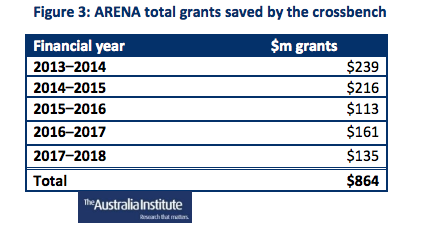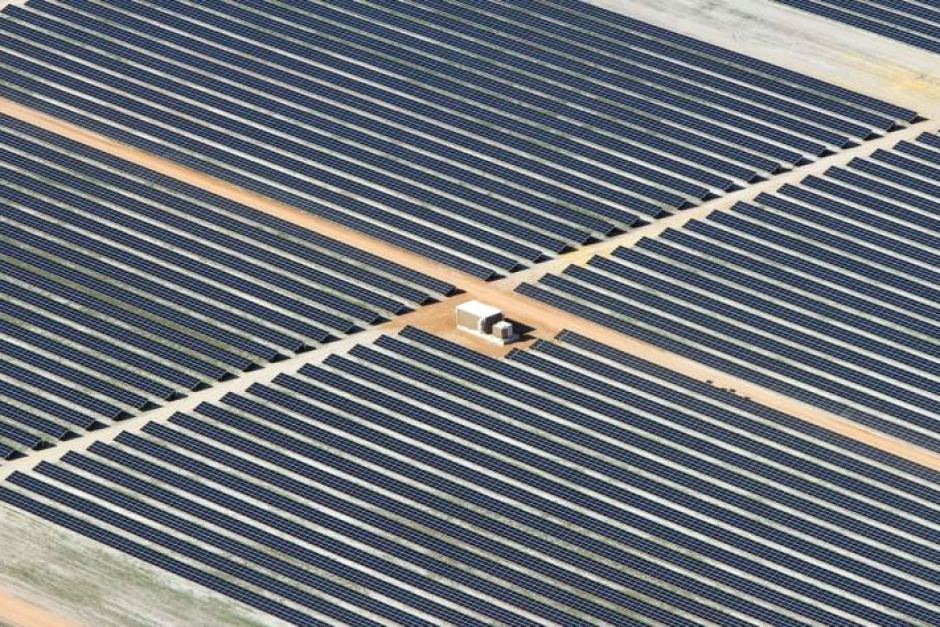At various points over the last five years, Australia’s key renewable-enabling policies and bodies were under attack by the Coalition Government. Fortunately, time and time again, the Senate crossbench proved to be an insurmountable obstacle.
The Labor Opposition and various members of the crossbench of Greens, minor party and independent senators have managed thwart the attempts at abolishing the Clean Energy Finance Corporation (CEFC), ARENA and the Renewable Energy Target (RET), which according to The Australia Institute has saved over $23 billion worth of projects that received in total $7.8 billion.

“When they came to power, the Coalition tried to take an axe to renewable energy investment in Australia,” said Ben Oquist, Executive Director of The Australia Institute.
“Thankfully, by working with Labor and The Greens, the crossbench stopped that from happening and saved more than $23 billion of future investment in the renewables sector.”
The Saved by the Bench report has been released in conjunction with Australia Institute polling, showing that a majority of Australians believe the country is better off because of the Senate and that better laws are created when the government has to negotiate with other parties.
CEFC
The Australian government’s green bank, the Clean Energy Finance Corporation (CEFC), was established in 2012 and began making investments in 2013.
Following its election in 2013, the Abbott Government made two attempts to abolish the CEFC, blocked both times by Labor, Senator John Madigan (abstaining), Nick Xenophon and the Greens in the Senate. Another attempt was made in 2014 but was not brought to a vote.
Since then, the CEFC has committed $6.65 billion to projects with a total value of $19 billion. In 2017-18, the CEFC reported a record year of investment with a total of $2.3 billion allocated for clean energy projects.
ARENA
The Australian Renewable Energy Agency (ARENA) was established in 2012 with a mission to provide funding to renewable energy projects, mostly as grants of up to 50% of project cost.
In June 2014, a bill to abolish ARENA was introduced, but was abandoned when it became clear that the Agency was supported by key members of the Senate crossbench, including Palmer United Party, Ricky Muir and Nick Xenophon.
ARENA has since issued grants worth $864 million. In total, ARENA has provided grants of $1.2 billion to projects with a total value of nearly $4.4 billion

RET
Introduced in 2000, the RET mechanism has been one of the key factors driving investment in renewable energy in Australia across all segments.
With one certificate allocated for every MWh generated, the RET comprises both large-scale generation certificates (LGCs) and small-scale technology certificates (STCs) issued to household and small commercial installations (up to 100 kW).
Thanks to the crossbench, it survived fervent attacks over the years. This includes Tony Abbot’s efforts to completely scrap the mechanism, which ended with winding it back from 41,000 GWh to 33,000 GWh in a compromise deal with the Labor in 2015. The compromise to reduce the RET was supported at the time by the Clean Energy Council.
“Without the crossbench, the RET would have likely been abolished and the assistance it provides to households and large scale renewable energy generators lost entirely,” the report states.
Since 2013/14, the RET has helped the installation of 806,000 solar panels and the generation of 85m MWh of electricity from large-scale generators.
The report notes that saving the RET and CEFC has resulted in emissions reductions of at least 334m tonnes CO2-e, which is more than the government’s policy, the Emissions Reduction Fund, is likely to deliver over its six years of operation (92m tonnes from its creation in 2014 to 2020).
This content is protected by copyright and may not be reused. If you want to cooperate with us and would like to reuse some of our content, please contact: editors@pv-magazine.com.









By submitting this form you agree to pv magazine using your data for the purposes of publishing your comment.
Your personal data will only be disclosed or otherwise transmitted to third parties for the purposes of spam filtering or if this is necessary for technical maintenance of the website. Any other transfer to third parties will not take place unless this is justified on the basis of applicable data protection regulations or if pv magazine is legally obliged to do so.
You may revoke this consent at any time with effect for the future, in which case your personal data will be deleted immediately. Otherwise, your data will be deleted if pv magazine has processed your request or the purpose of data storage is fulfilled.
Further information on data privacy can be found in our Data Protection Policy.